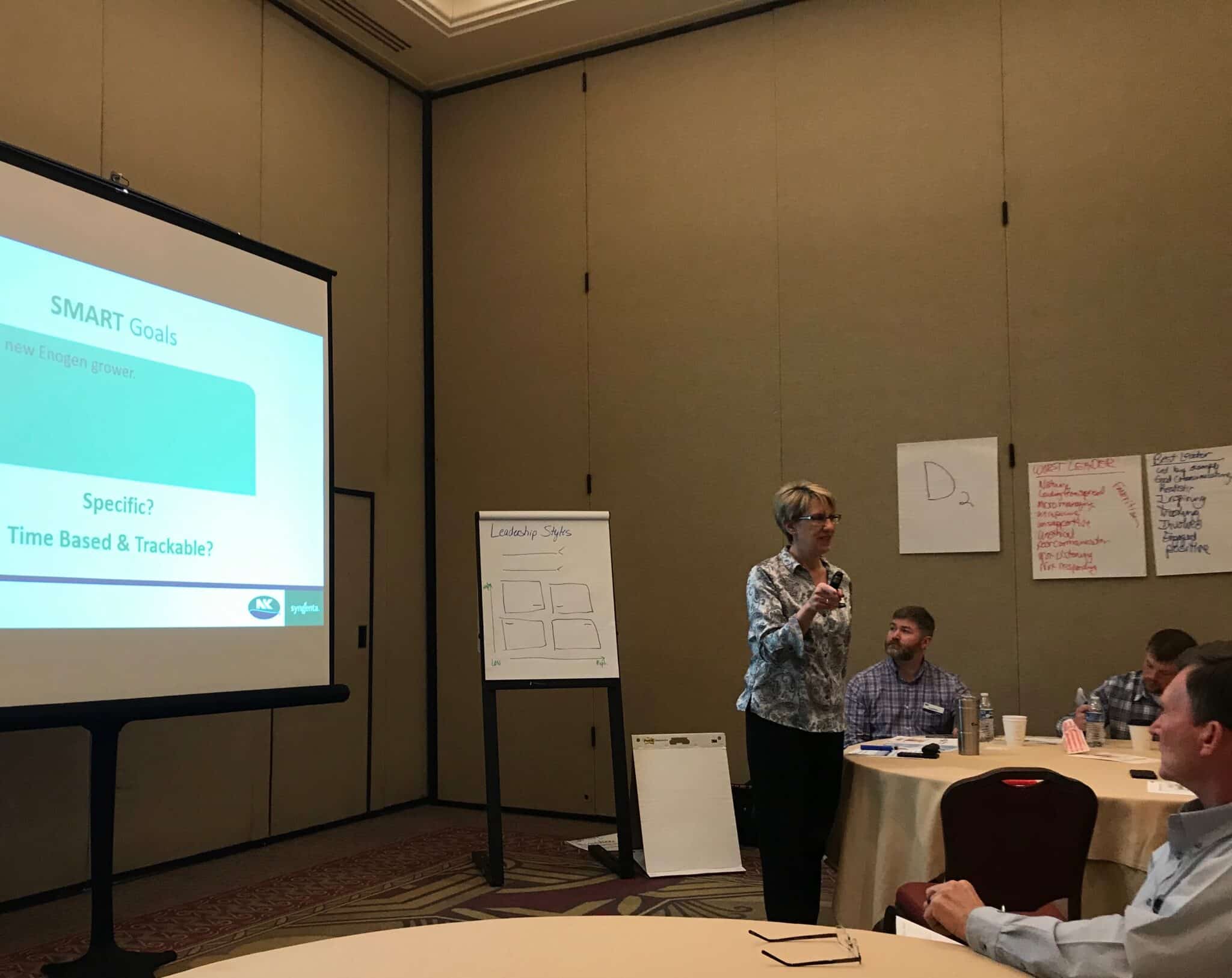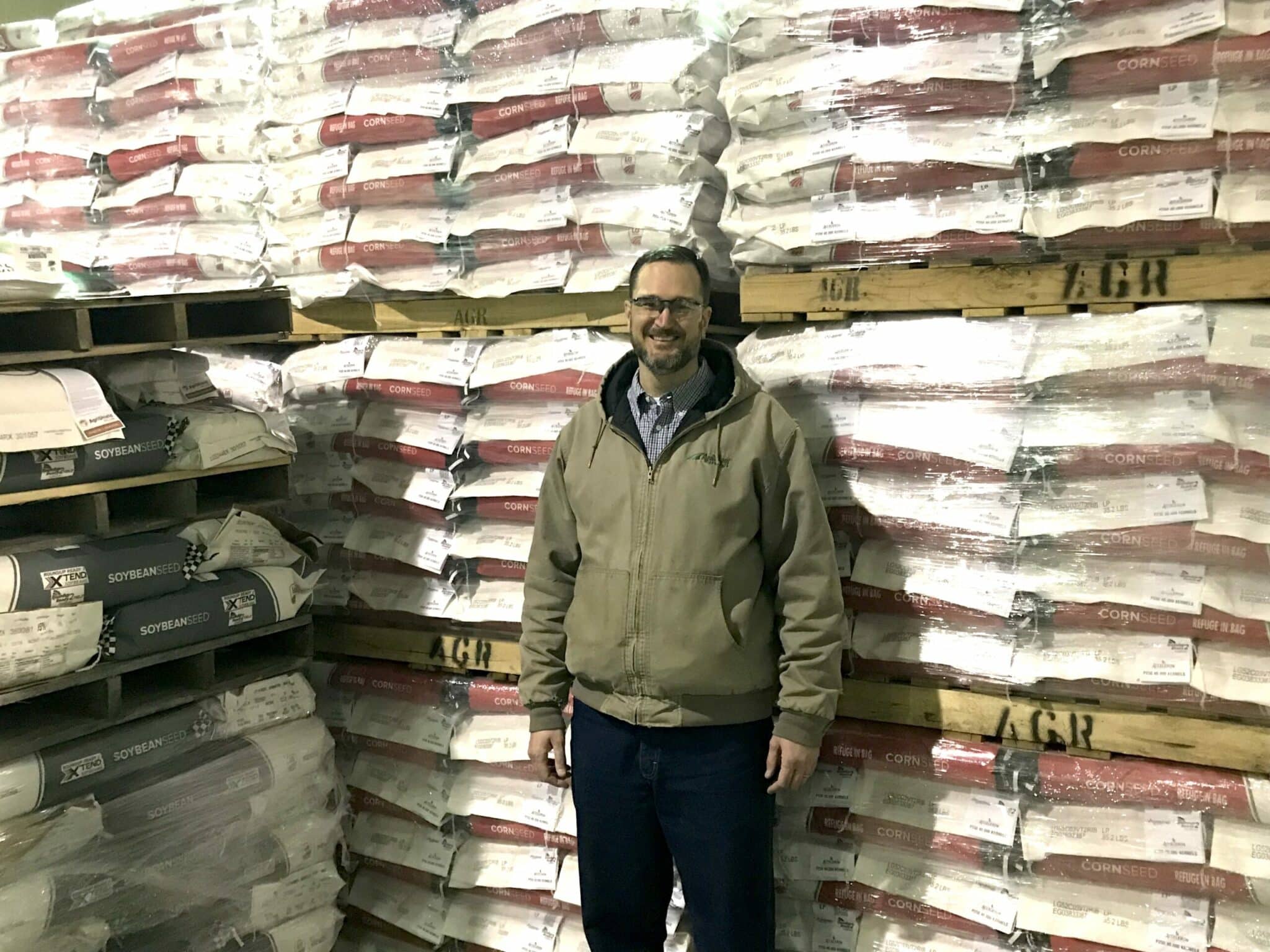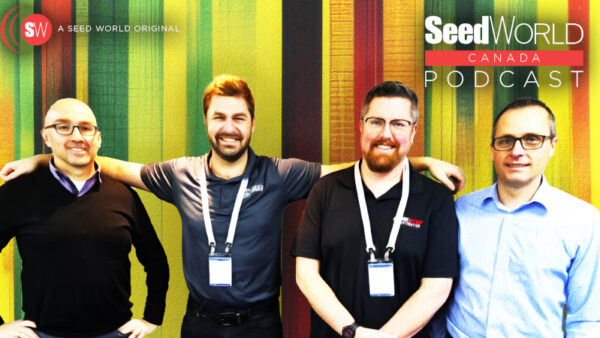Seed World chatted with three individuals who shared their insights on the different roles played in employee development and the struggles of both finding and building capital through promotions and ever-changing leadership roles.
The wisdom in any business model is the recognition of, and value placed on, human capital; those employees, supervisors and upper-echelon managers that keep a company’s moving parts moving.
When Wyatt Watson conducted the first study of human capital in 1999, a series of multiple regression analyses showed a clear correlation between a company’s human capital development and shareholder returns – the more invested in their employees, the more shareholder returns. Since then, many studies have looked at the relationship between human capital management and financial profitability, all strengthening the argument for a stronger human capital development structure across all industries.
But does the responsibility of creating value in human capital lie solely in the human resources department, and what role does an employee play in creating value within?
Employee Investment
As the director of Purdue University’s Center for Food and Agricultural Business, Mike Gunderson spends significant time designing anddelivering non-credit, professional development programs to a broad cross-section of agricultural employees.
“The No. 1 reason people enroll in our program is to become a more effective leader for the company they work for,” Gunderson says. “The second most common reason is to develop business acumen. For the most part, the people who enroll are lifelong learners and find value in the opportunity to put new thoughts and concepts into practice.”
Gunderson shares that between half and two-thirds of the students enrolled in the center’s online MS-MBA program receive tuition support from their employer, and that support is not only an investment in the employee but an investment in the company as a whole.
He says the value isn’t intrinsic to a company’s investment in an employee, but rather the value is found in the type of employee a company invests in. Gunderson shares that the students who excel within the center’s non-credit programming and MS-MBA coursework are the students who don’t necessarily have the time to commit but do it to better themselves and the companies they work for.
“We are in a competitive global marketplace,” he says. “Companies need people who can provide thoughts and leadership.
“In an automated world, the payoff for return on investment is higher when a company is investing in a skilled individual who is providing leadership for an organization. And that’s what we see – people who already have a full plate between work and home, but make the sacrifices to commit to becoming a stronger leader.”
Learning to Lead
Transitioning from a “doing” position to a “leading” position requires a different skillset and mindset, Gunderson says, and leadership is a key component in a successful transition.
“Leadership can be many different things,” he says. “Leadership isn’t just having a title and having an organizational structure that puts people underneath you. True leadership within a company helps the customer to be more profitable, the organization be more profitable and the entire value chain to become more efficient.”
Gunderson says that accepting a managerial position means making a commitment to mentorship and personal and employee development, as well.
“The biggest challenge most employees encounter when making the transition from ‘doing’ to ‘managing’ is letting go of the ‘doing’ that was involved in their previous role. For example, we see a lot of sales managers that continue to service the biggest, key accounts rather than mentoring the next generation to be successful. To be a successful leader, you can’t be afraid to stop ‘doing’ to let your team reach its potential.”
For Lori Thomas, NK sales trainer for Syngenta, and Mark Lamie, AgReliant Genetics assistant location manager, developing productive teams by leveraging resources and taking advantage of afforded opportunities, has served as a stepping stone throughout their long careers in the seed industry.

“I started out in the late 1980s with Garst Seed Company and made the transition when Syngenta purchased Garst in the early 2000s,” Thomas says. “I have had a different role every three to five years, and that has always given me energy. Every role has been in service to helping me succeed in my current role.”
From administrative and marketing roles to sales and training, Thomas says she draws on the journey of her career’s pathway when helping new managers acclimate to their new responsibilities.
“I think that a person from outside of the seed industry could put into play the same training concepts that I do, but it is easier for me to apply the concepts to situations that managers are going to see – real life – because I have been there,” she says.
Lamie echoes. Beginning his career with AgReliant Genetics as a temporary worker/operating detasseling machinery, Lamie worked long hours for six months before being offered a full-time position with the company as a warehouse employee in 2005; a year later he became the location’s warehouse manager.
“The hardest part (of making the transition to a management position) was that some of the employees who work at our locations have been temps for 10 or 11 years — everyone wants a full-time position,” Lamie says. “So there was some thought of ‘Who is he to tell us what to do, he was a temp too.’
“There is a really fine balance. You don’t want to be ignorant of how you are perceived, but you also want to make sure that you don’t get to the point of thinking you are someone that you are not and fooling yourself.”
Lamie says education and mentorship are tools that have best served him in navigating his career. With dual bachelor’s degrees in history and religion, Lamie wanted to build his business acumen and began work on a graduate degree in organizational leadership soon after accepting the warehouse supervisory position.
“PEOPLE WON’T COME TO YOU AND TELL YOU THAT THEY ARE WILLING TO HELP. YOU HAVE TO SEEK IT.” Mark Lamie
“I started learning about Myers-Briggs and how people learn in different ways,” he says. “It was a good lesson for me to assess my learning style and figure out that it was up to me, as a manager, to learn how to best reach each person on my team. It was a good lesson in stepping back and learning what clues and signs people are giving to figure out how to connect. Leadership as a whole, I think, is about stepping back and learning what signals people are giving and using those signals to streamline the communication process.”
Managing Professional Growth
Like Thomas, Lamie shares that his role with AgReliant Genetics has changed about every two to three years and has required his family to move multiple times. Those moves to new locations, meeting new people and experiencing different management styles have been instrumental in Lamie’s own management preferences.
Lamie says that a struggle, but essential compromise, of managing at a higher level is stepping back and allowing supervisors to figure out what works best for their management style.
“I have run the warehouse, maybe in a different way than the operation is run now, but with my transition back to this plant, my job wasn’t to come in and change things to ‘my way’ but to help guide, coach and help every department find ways to be more efficient,” he says.
Gunderson teaches that providing thought, innovation and change leadership, and, often times, simply leading a team, are all equally important in effective management. He says that it’s difficult for new managers to understand that the time they dedicate to mentoring is a productive use of their time.
“For so many managers, they are used to being high achievers,” Gunderson says. “They can see sales numbers or a new product in R&D, but it is a whole lot harder when you are mentoring. The payoff is often times in the future, and it can feel like you aren’t accomplishing anything, but that time dedicated to mentoring is really important.”
For Lamie, the motivation to mentor came from outside the workplace, from a fellow student in his graduate cohort.

“When I started grad school, a professor asked all of us why we were there. Most said to make more money,” says Lamie. “One man, a man who would end up being my own mentor, said, ‘To be the best resource I can be for my employees.’ I thought it was the fluffiest answer I had ever heard, but in time I learned that it was true. That was his goal, and it became mine, too. A leader should be doing everything they can to help their employees be successful.”
Creating Future Leaders
In both Syngenta and AgReliant Genetics, the opportunities to climb the career ladder exist for all employees, providing they are willing to commit, take on new challenges and relocate.
“I would say at least 50% of our senior roles are filled by people who have developed within Syngenta; outside of that we have a team that is always looking for outside talent. Our seed business is expanding, and we continue to bring people into new roles,” Thomas says.
Another asset the Syngenta team has developed in the last decade is a robust internship program that works to integrate college sophomores and juniors into different aspects of the business. A developmental sales representative (DSR) program is filled with senior level students who have completed an internship as either sophomores or juniors.
“We have found a high correlation between successful internships, specific projects with clear objectives that can be quantified and measured and high engagement from a mentor,” Thomas says. “We know that it’s a recipe that works and those employees who are hired from the DSR program already have training and experience with the company before they ever take-over a territory. It’s giving them a leg-up from the beginning and helping to ensure their success.”
For new managers, Thomas says that the Syngenta training model offers new managers training twice a year and focuses on leading a team versus managing a team, helping new managers to envision a bigger picture. As a trainer, Thomas employs two teaching concepts to help new managers prioritize their time: Ken Blanchard’s Situational Leadership and Coaching Methodology for High Performance Sales Management.
Using those tools, new managers can learn to implement different leadership styles to accomplish tasks and develop a cadence of how they will connect with their people.
“One of the biggest things I had to adjust to when I became a manger was the constant demands,” says Thomas. “There is a constant demand from sales reps, other managers, distributors — just an ongoing demand for your time and attention. One of the critical pieces for me was learning to become efficient at managing those demands.”
For AgReliant Genetics, a clear focus has been placed on training and employee development through a devoted training department and the implementation of AgriLearn, an easily accessable learning management system with both online and in-person training opportunities for employees.
As for Lamie, he encourages all employees, not just new managers, to seek advice from their peers and says that throughout his career, people have always been willing to help once he took the initiative to ask.
“People won’t come to you and tell you that they are willing to help. You have to seek it,” he says.











